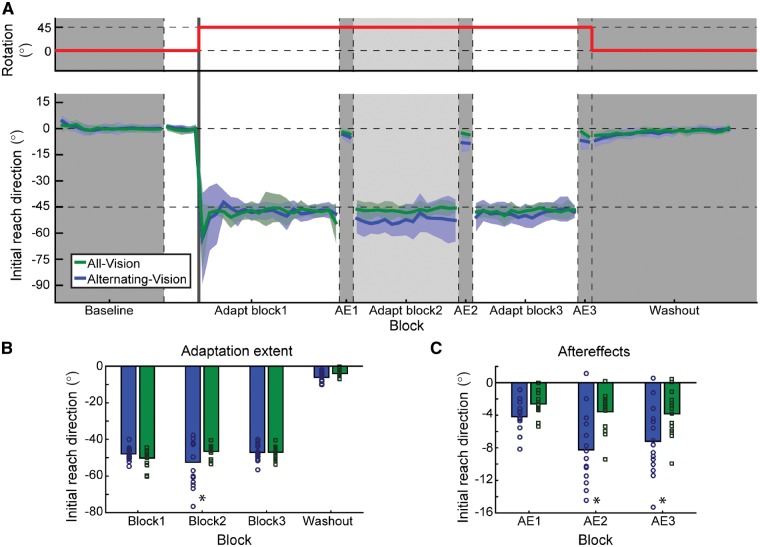Figure 2.
Experiment 1. (A) Top: The thick red line represents the direction in which the cursor has been rotated relative to the position of the hand. Bottom: Initial reach direction across the three adaptation blocks for the two groups. Dark grey sections are times when the hand is not visible to both groups; during the light grey section, the hand is hidden from the alternating-vision group (blue) but remains visible to the all-vision group (green). During the three after-effect (AE) blocks, neither vision of the hand nor the cursor is available to participants. (B) Summary of the average initial reach direction measured during the last two cycles of each adaptation block and the first two cycles of the washout block, for the all-vision (green) and alternating-vision (blue) groups. Significant differences between groups are denoted by an asterisk. (C) Average reach direction during each of the three after-effect blocks (average of both cycles) for the two groups as in B.

